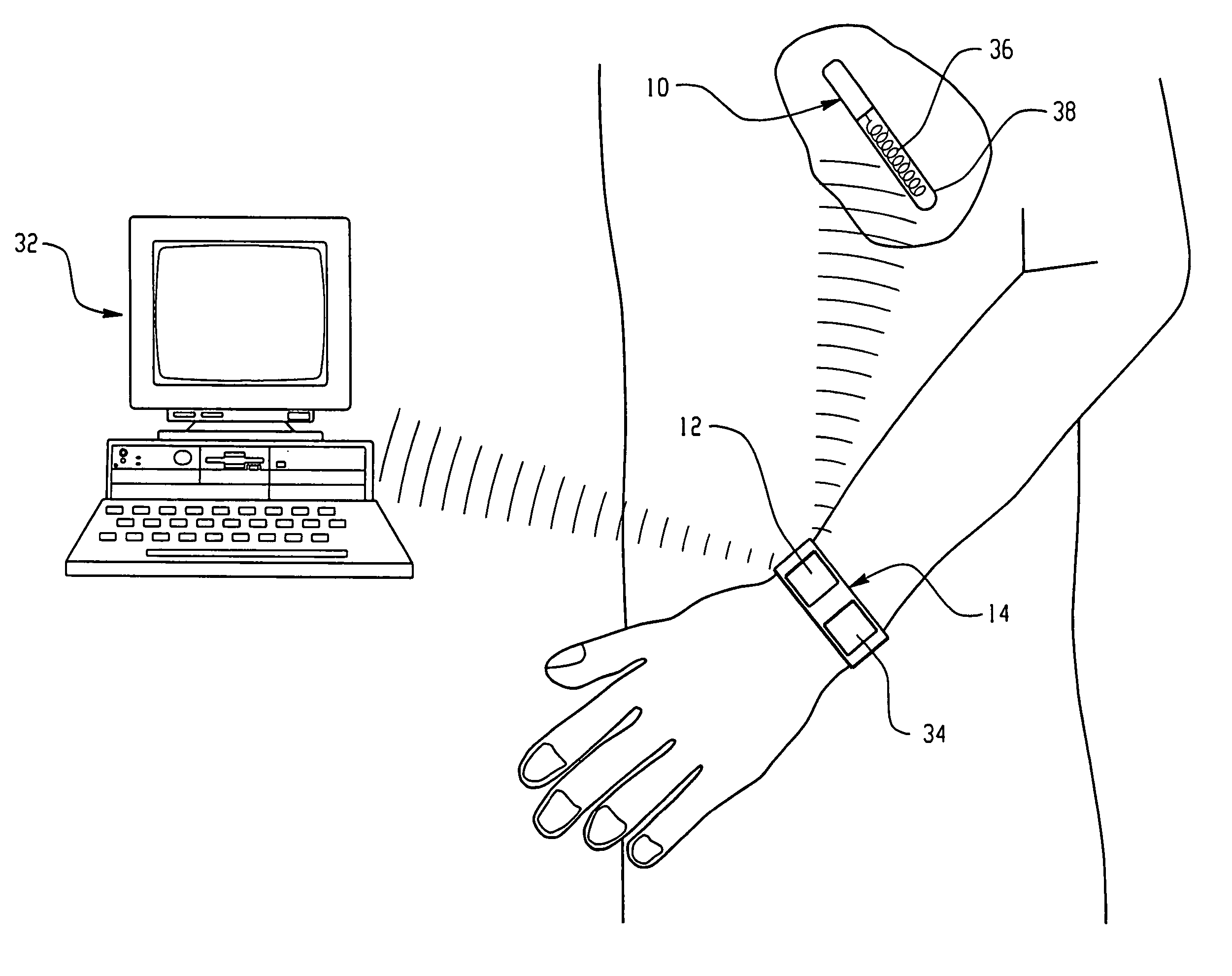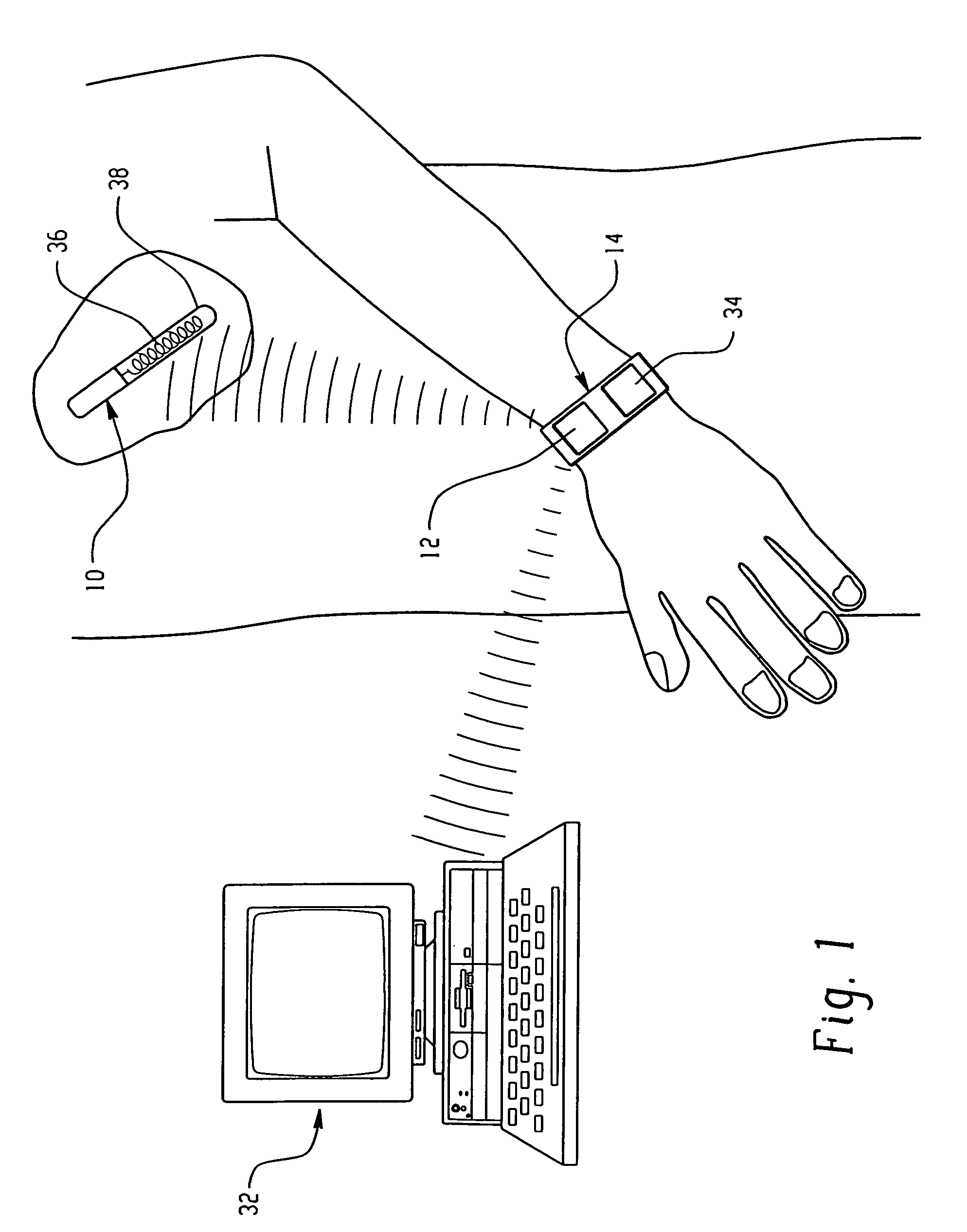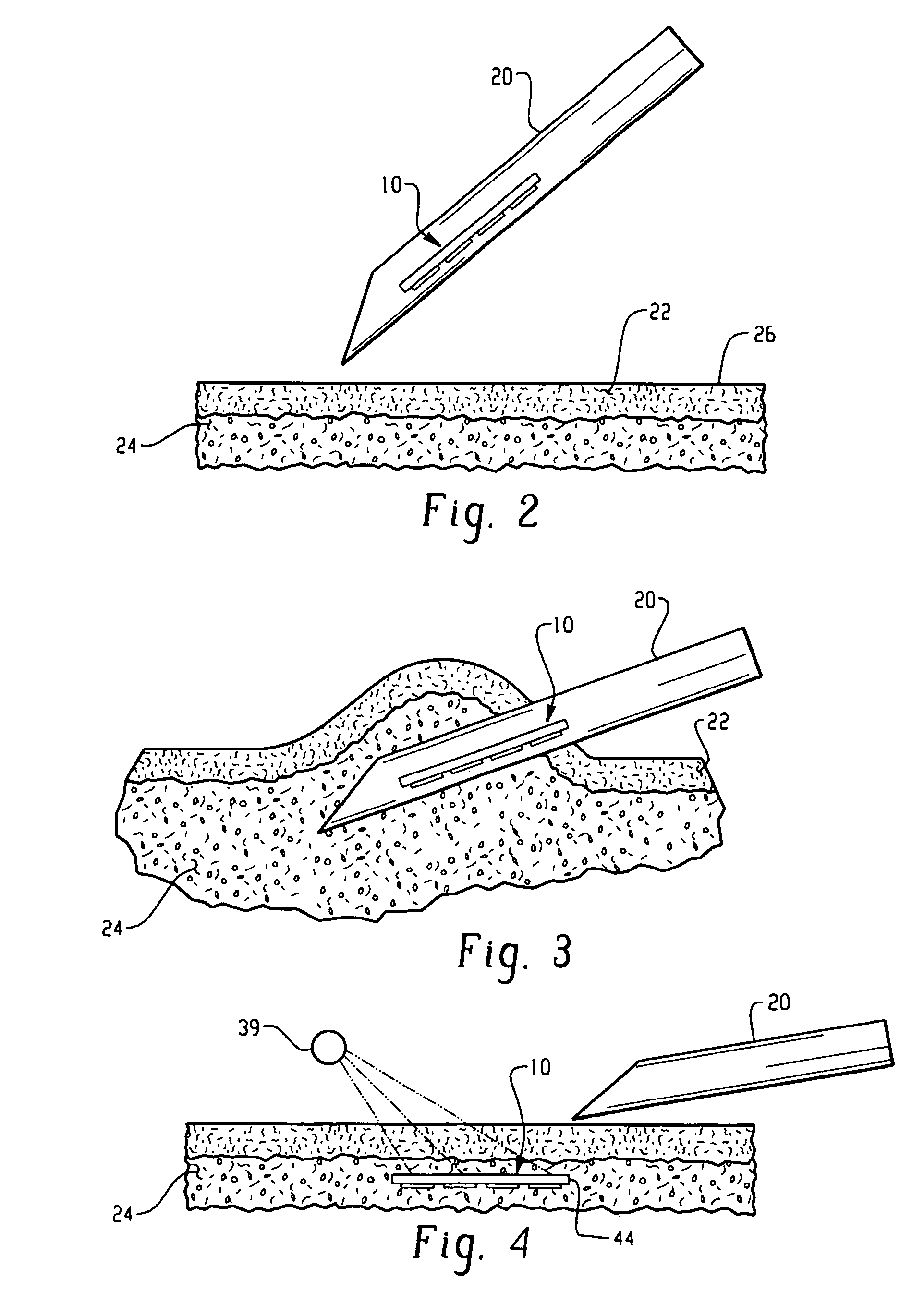Sensor system
a sensor system and in vitro monitoring technology, applied in the field of in vivo or in vitro monitoring, can solve the problems of inability to detect infection at the site, inability to monitor the site, poor usage compliance of patients,
- Summary
- Abstract
- Description
- Claims
- Application Information
AI Technical Summary
Benefits of technology
Problems solved by technology
Method used
Image
Examples
example 1
Preparation of a Sliver-Type Glucose Probe
[0287]An optical glucose probe of the type shown in FIG. 8 is prepared as follows: A strip-shaped plastic plate 44 is covered with a CAP / CA membrane by a dipping method or spraying method. For example, 10 μl of acetone solution containing 0.5 wt % of CA and 0.5 wt % of CAP is applied to a plastic plate and then allowed to stand until the acetone is evaporated. The resulting membrane is about 10μ in thickness. The membrane is treated with 1 ml of PBS solution containing 5 wt % of 1-ethyl-3-[3-(dimethylamino)propyl]carbodiimide hydrochloride (ECD-HCl) and 5 wt % of N-hydroxysuccinimide (NHS). It is then treated with a PBS solution containing 2 wt % of GOX and 0.5 wt % of a pH indicator dye (neutral red or congo red). The membrane is covered with a poly(acrylate) gel layer prepared by radical co-polymerization of sodium acrylate (10 wt %) and N,N′-methylenebis(acrylamide) (0.2 wt %). The acrylate layer is covered with a chitosan / heparin membran...
example 2
Preparation of a Sliver-Type Glucose Probe
[0288]An optical glucose probe 400 as shown schematically in FIG. 24 is prepared as follows: A pH sensitive solvent polymeric membrane cocktail is prepared with a tetrahydrofuran (THF) solution containing 50 mg of poly-vinyl chloride (PVC), 100 mg of a membrane solvent (e.g., 2-nitrophenyl octyl ether), 0.5 mg of a hydrogen ion-selective chromoionophore (e.g., chromoionophore II (ETH 5350, 9-(diethylamino)-5-[(2-octyldecyl)imino]benzo[a]phenoxazine), 0.5 mg of a lipophilic anion-exchanger (e.g., KTpClPB (potassium tetrakis(4-chlorophenyl)borate)), and 5.6 mg of a potassium ionophore, (e.g., bis(benzo-15-crown-5) (K+ ionophore, bis[(benzo-15-crown-5)-4′-methyl]pimelate)). This cocktail is cast on a strip-shaped glass plate 44 and dried to form a first layer 410. The PVC membrane 410 thus obtained is covered with a CAP / CA membrane by the spraying method. The CAP / CA membrane is treated with a PBS solution containing ECD-HCl (5 wt %) and NHS (5 ...
example 3
Preparation of a Capsule-Type Glucose Probe
[0289]A glucose probe of the type shown in FIG. 16 is prepared as follows: A pH sensitive solvent membrane cocktail containing a hydrogen ion-selective chromoionophore (chromionophore III, 1.6 mg of a lipophilic anion-exchanger (NaHFPB), 22 mg of a sodium ionophore (bis(12-crown-4) (Na+ ionophore, bis[(12-crown-4)methyl]2-dodecyl-2-methylmalonate), and 100 mg of a membrane solvent (dioctyl sebacate) is prepared. Into 50 mg of the pH-sensitive membrane cocktail, 100 mg of ODS beads (average diameter: 25 μm) are added and then stirred. CAP powder is treated with EDC-HCl and then NHS. After washing the ECD-treated CAP powder with water, the powder is treated with a PBS solution containing GOX. The powder is rinsed with a PBS solution and then dried in air. A polyurethane / CAP / CA tube 160 is prepared with 200 μm diameter. The outermost layer 190 of the tube is made of polyurethane with about 10 μm thickness and the inner layer 194 (about 10 μm t...
PUM
| Property | Measurement | Unit |
|---|---|---|
| concentrations | aaaaa | aaaaa |
| thickness | aaaaa | aaaaa |
| thickness | aaaaa | aaaaa |
Abstract
Description
Claims
Application Information
 Login to View More
Login to View More - R&D
- Intellectual Property
- Life Sciences
- Materials
- Tech Scout
- Unparalleled Data Quality
- Higher Quality Content
- 60% Fewer Hallucinations
Browse by: Latest US Patents, China's latest patents, Technical Efficacy Thesaurus, Application Domain, Technology Topic, Popular Technical Reports.
© 2025 PatSnap. All rights reserved.Legal|Privacy policy|Modern Slavery Act Transparency Statement|Sitemap|About US| Contact US: help@patsnap.com



